Chawanmushi is a magical Japanese egg custard/soup hybrid that will warm you up and make your belly happy.
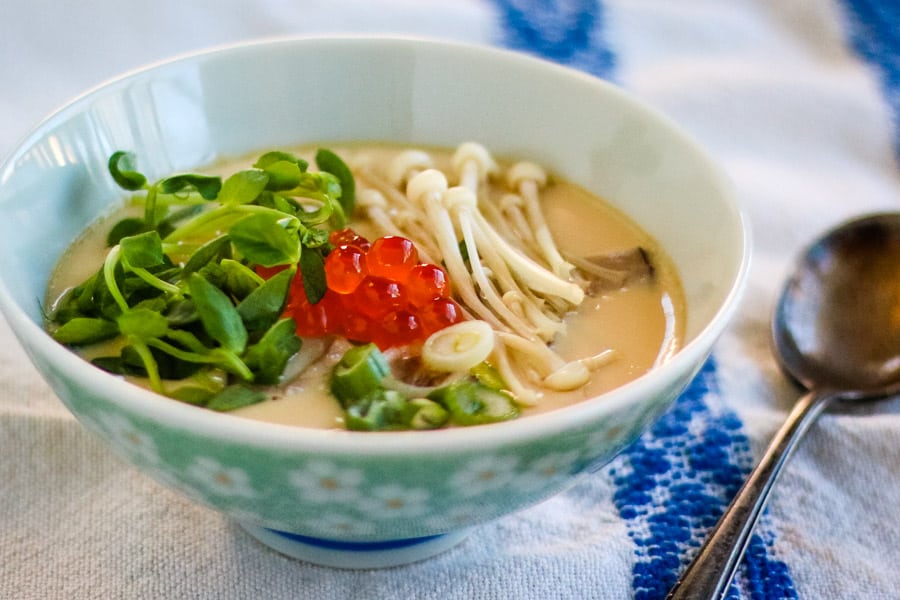
This post may contain affiliate links. As an Amazon Associate, I earn from qualifying purchases. See my Affiliate Disclosure.
I was about to start this post talking about how cold and miserable San Francisco can be, but then I remembered that I can’t stand it when people belabor the fact that San Francisco is cold and damp.
I mean, it is, but whatever. We also have places like Japantown.
Japantown is one of my favorite places in San Francisco. Here you can find any number of restaurants that serve steaming hot bowls of chawanmushi.
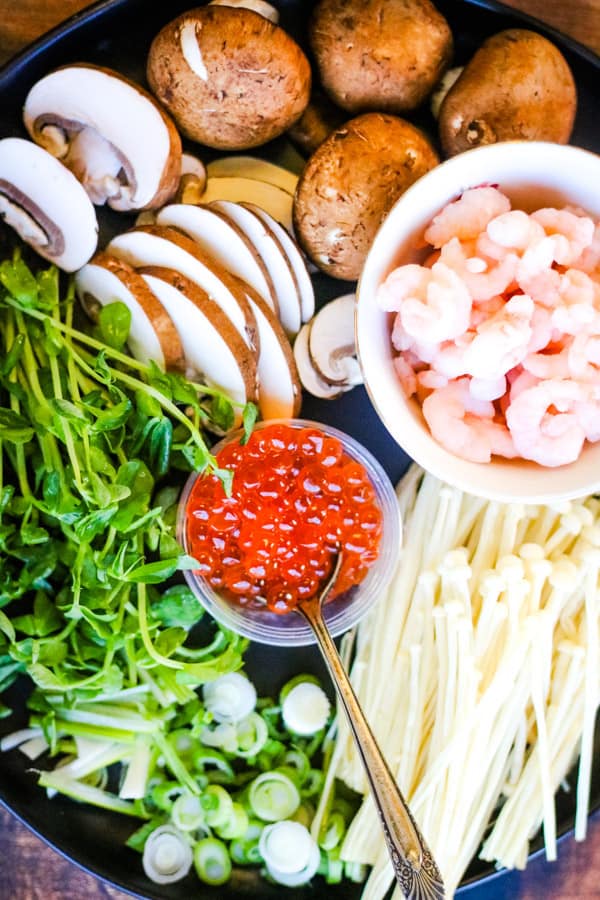
This magical savory Japanese steamed egg custard will brighten any day, no matter how foggy, with its silky smooth egg layer concealing an assortment of delectable hidden treasures.
What is chawanmushi?
Chawanmushi is a magical Japanese egg custard/soup hybrid that will warm you up and make your belly happy.
The word means “steamed in a cup,” describing the dish perfectly as it is an egg custard steamed in a teacup.
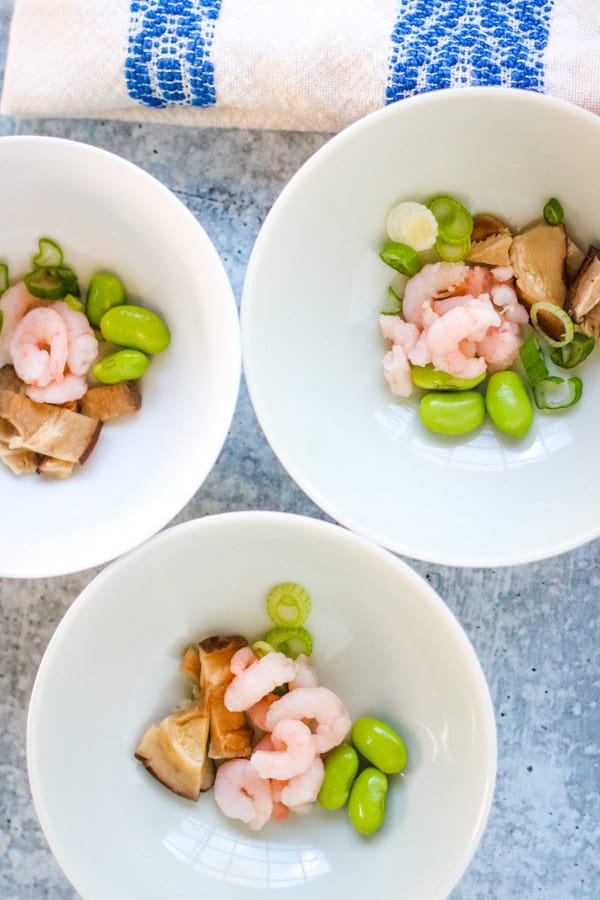
Chawanmushi is a savory egg custard that is made by whisking together dashi stock (Japanese soup stock, which can be made from seaweed or fish) and eggs.
What ingredients do you need for chawan mushi?
This traditional appetizer often features ginkgo nuts, enoki or shiitake mushrooms, and kamaboko (Japanese fish cake) hidden under an egg custard seasoned with soy sauce, mirin, and dashi.
This is a versatile dish that, like sushi or ramen, lends itself to variations. Using seasonal and local ingredients is an important part of Japanese cuisine, and this is the perfect dish to showcase different foods.
Since I live in the San Francisco Bay Area, an area known for its Dungeness crab, I love to use the sweet tender crabmeat in my chawanmushi. Other common additions are shrimp, fish, or chicken, enoki mushrooms, shiitake mushrooms, and other vegetables.

How is it cooked?
The dish is steamed in delicate lidded teacups (if you don’t have lidded teacups, you can use regular teacups and cover them with a small saucer or tightly with aluminum foil). The custard sets on top, while the broth and tasty tidbits are hidden underneath.
These additions are placed in the bottom of the teacup. The eggs, seasonings, and broth are whisked together and then poured over the top. The teacups are then covered and set in a water bath to steam.
The egg mixture forms a custard layer that hides all the tasty surprises within. Armed with a spoon, you’ll become one happy treasure hunter.
Is chawanmushi easy to make?
Yes!
Chawanmushi is insanely easy to make. It is also delicious and clever enough to surprise and delight even the most jaded foodie. This chawanmushi recipe replicates the one you’ll find in Japanese restaurants.
Tips for making the best chawanmushi
- When whisking the egg mixture, be careful not to whisk in too much air, which will create bubbles in the custard. Whisk gently and just until well combined.
- Place just a few morsels in the bottom of each teacup. The dish is meant to be a delicate appetizer, so don’t overload it.
- Pour the liquid slowly into the teacups, again to avoid creating too many bubbles.
- It is best to cover the cups for steaming—either with lids or with aluminum foil. Covering the cups isn’t totally necessary, though. Just be careful to keep the water at a gentle simmer that won’t bubble up into the teacups.
- Use a ratio of 1:1.75 for eggs to broth, so 2 large eggs (100ml) to 175ml (3/4 cup) stock. For this recipe, serving 4, I use 4 large eggs and 1 ½ cups broth. If you want a firmer custard, reduce the broth. For a softer custard, increase the broth.
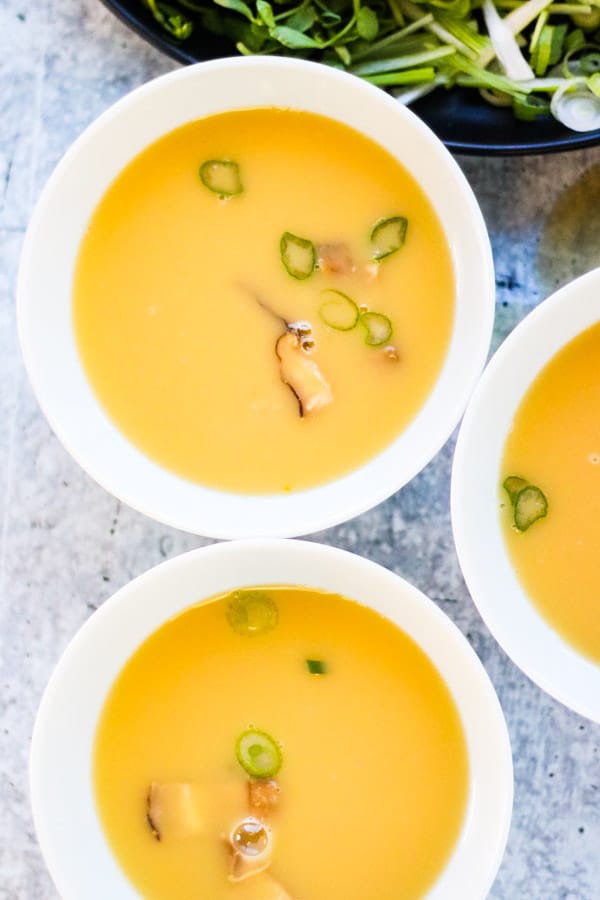
Is chawanmushi served hot or cold?
That depends. On a cold winter day, you can serve chawanmushi steaming hot for a delicious warmup.
On the other hand, in the summertime, chilled chawanmushi is super refreshing. David Chang serves a chilled chawanmushi topped with crabmeat at Momofuku.
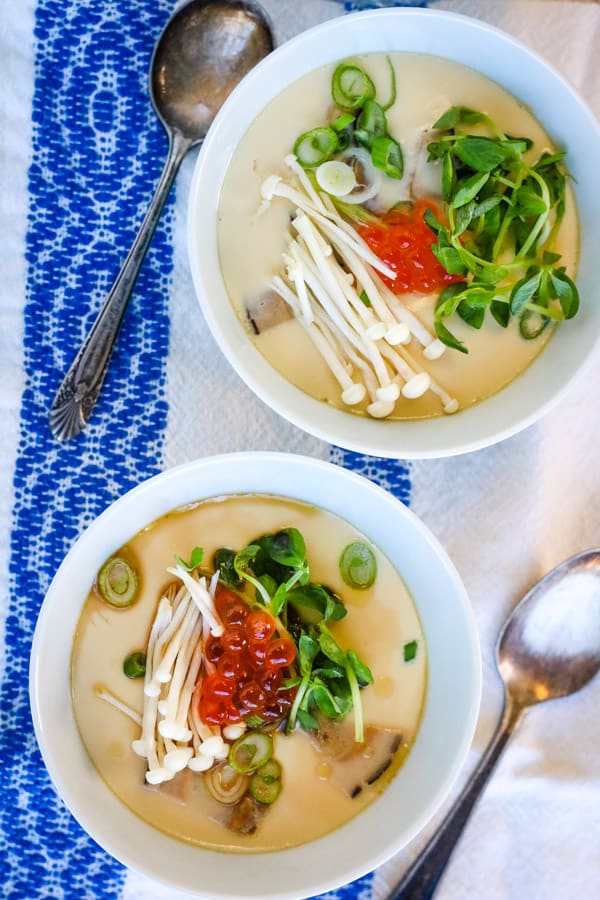
What is chawanmushi?
Chawanmushi is a savory egg custard that is made by whisking together broth, like chicken broth or dashi stock (Japanese soup stock, which can be made from seaweed or fish) and eggs.
The mixture is then poured into small bowls or teacups over any number of tasty morsels from ginkgo nuts to shiitake mushrooms, chicken, seafood, or other delights.
Gently steamed, the custard forms a layer that hides all the tasty surprises within. Armed with a spoon, you’ll become one happy treasure hunter.
Is chawanmushi easy to make?
Yes!
This Japanese dish is insanely easy to make. It is also delicious and clever enough to surprise and delight even the most jaded foodie. This chawanmushi recipe replicates the one you’ll find in Japanese restaurants.
My point is, wherever you live, if you’re cold, just make yourself a steaming hot bowl of chawanmushi (or, if you live in a hot climate, serve it chilled, like David Chang does at Momofuku, topped with fresh crabmeat). You’ll be happy you did.
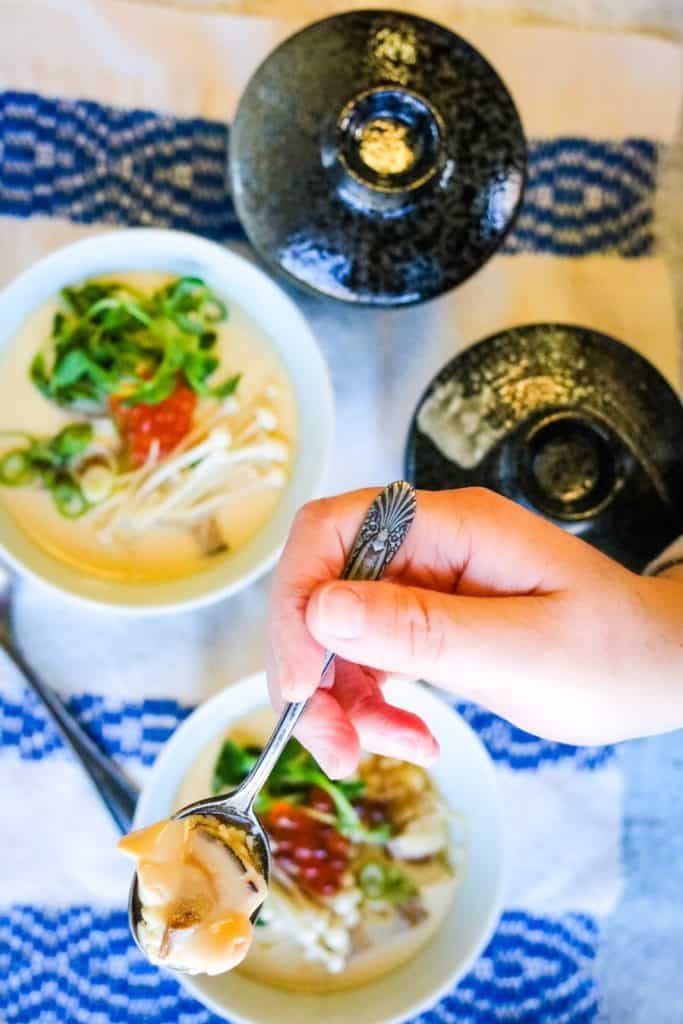
more japanese recipes you’ll love
- Yaki Onigiri
- Chicken Karaage
- Spicy Miso Ramen
- Ramen Tare
- Soy Sauce Eggs
- Sunomono
- Onigiri
- Miso Salmon
- Stir-Fried Lotus Root
- Chawanmushi
- Japanese Souffle Pancakes

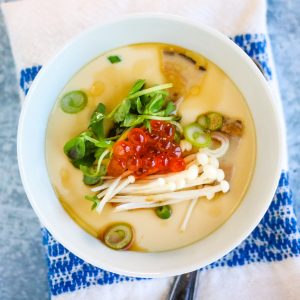
Chawanushi (Japanese Savory Egg Custard)
Ingredients
Custard
- A small handful of enoki or other small mushrooms
- 12 small shrimp or 6 medium shrimp cooked or just shelled and deveined
- 2 scallions thinly sliced
- 2 large eggs
- ¾ cup chicken broth or dashi
- ¾ teaspoons soy sauce
- 1/2 teaspoon mirin
- 2 tablespoon ikura salmon roe, to garnish (optional)
- Pea shoots or other microgreens to garnish
Sauce
- 1 tablespoon soy sauce
- 1 tablespoon rice vinegar
- 1 teaspoon sesame oil
- A few drops of chile oil or to taste
Instructions
- Divide the mushrooms and shrimp between two 8-oz ramekins, teacups, rice bowls, or wide-mouth canning jars. Add some of the scallions to each bowl, but save some for garnish.
- In a glass measuring cup with a spout, whisk the eggs gently, just enough to combine the yolk and white without adding too much air. Add the broth and soy sauce and whisk just to combine.
- Pour the mixture over the shrimp, mushrooms, and scallions, dividing equally between the two dishes.
- Bring water to a boil in a pot with a steamer insert (alternatively, use a bamboo or other steamer in a lidded pot large enough to contain it fully with the lid on). When the water is boiling, reduce the heat to medium-low.
- Cover the dishes with lids, small saucers, or tightly with aluminum voil, and place the dishes into the steamer. Cover the pot with the lid. Steam the custards for 10 to 12 minutes, until they are fully set.
- Transfer the dishes to small plates and serve hot, garnished with scallions, ikura, pea shoots, additional mushrooms, etc.



1 thought on “Magical Chawanmushi (Japanese Savory Egg Custard)”